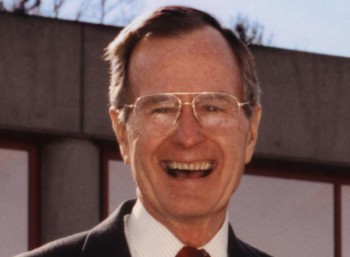Higher education model in the 19th century can be described in a simplified way as follows. Professor meets high students in the classroom and shares his wisdom with them during the lecture. They listen, take notes and memorize. As sponge absorbs water, their brains absorb knowledge. Then they are tested how much they memorized. The best student is the one that memorized most. In symbolic words in 19th century higher education model universities taught students what is the “hammer” and how it is built.
In the 20th century some universities understood that this 19th century model was wrong. Many graduates found that this theoretical knowledge they memorized was of little use in the real life. So universities started to change, they investigated what competences were necessary on the labor market and they designed curricula in such a way, that students could acquire these competences during the education process. Competences included knowledge, skills and attitudes. Graduates of these universities were competent and they could find good jobs, make good money and have good life. In other words, universities not only taught how the hammer is build, but also that it can be used to hammer nails, and how to use the hammer efficiently. Employers were happy, they no longer had to spent time and money teaching new young workers how to use the hammer, they already knew it. And graduates of best universities could even use hammers more efficiently then the employers themselves.
Towards the end of the 20th century and in the 21t century we all understood that it is not enough. Countries develop and prosper when young generation is curios, creative, innovative and as a result creates new business models, new innovative products and services that be sold on the global market. So best universities once more redesigned their curricula. Now the goal is not to form a proper set of competences but to help students to find their talent. Every young person has a talent, but very few people are able to discover it and have successful professional career based on this discovered talent. Someone can have a talent to become a great salesman, but he would not know it if he never tried to sell anything. Someone may have a talent to become a great and famous speaker, but he will not know it he never tried to speak in public. So the modern 21st century university curricula are designed in such a way, that students do have the opportunity to find their talents and develop them. In symbolic terms we no longer teach students how to use the hammer, but how to invent new tools, much more efficient that the hammer. And if some student strengths are not related to the usage of the hammer we no longer teach them how to use it, but try to develop their natural strengths. This is how the quest for talent in the 21st century has started.
We have around 600,000 students in Kazakhstan. In the next couple of years they will begin their professional life. If we offer them 19th century style education, we will have 600,000 young people who learned theory and will have problems finding jobs. If we offer them 20thcentury style education, they will find jobs and perform them well, but little innovation will follow and country development will not meet the aspiration of the Kazakh nation. But if we offer them 21st century style education hundreds of young Kazakhs will transform exiting companies and create many new ones, and the Kazakh economy will thrive. Imagine that only 10 percent of students find their talent and strengths, it will be 60,000. And imagine that only 10 percent of those will use their talent and strengths to create new companies that will succeed in the global market place. It would still mean that 6000 new companies will be created, they will sell their products and services in many countries, they will be listed on stock exchanges across the globe and they will create hundreds of thousands of well paid jobs in Kazakhstan. Would it not be good for the country, for the future of the Kazakhstan?
This is the path we have chosen at the New Economic University, known in Kazakhstan as Narhoz. In order to help students to find their talent and strengths we no longer require them to write their diploma thesis in a form of a long paper. We invite them to form teams and work on real projects that we source from university business partners. We encourage students to come up with new business ideas and if they are good we offer to students access to vast network of entrepreneurs cooperating with our business incubator, so that new, innovative companies can be created. To give student access to best ideas on the global scale we now incorporate MOOCs (Massive Open Online Courses) offered by world best universities to our curriculum, so that student can listen to world best professors and be inspired by them. The meeting between students and our professors is no longer a lecture, when student memorize the course. Professors are now coaches and mentors of students and help them develop new ideas, help them find their strengths and talent.
What is necessary to make this quest for talent process more efficient? Best universities in Kazakhstan need more freedom to design their curricula. Kazakhstan needs new and more diversified programs that will be offered to students. Kazakhstan needs more business practitioners to participate in the education process. Kazakhstan needs that official bachelor and master degree requirements recognize that multiple choice testing was good in 19thcentury education model, but is not suitable for 21st century higher education model. Imagine that you have a horse, a dolphin and a monkey and you give them the same standardized test, to climb a tree. One should not be surprised that monkey passes this test with ease, but horse and a dolphin will fail this test. But if you ask the dolphin to swim fast, and a horse to run fast, they will perform with excellence.
I have worked in many countries across the globe. And I can say that Kazakh students that I met at our university are among the best talented in the world. They are smart, creative, full of energy. If we create a proper environment so that their talents are discovered and developed they will thrive and prosper, and with them the whole nation will prosper as well.
This should be our mission.


















Cytuję: " Professor meets high students in the classroom and shares his wisdom with them during the lecture." Co sie tłumaczy:" Profesor spotyka się z wysokimi uczniami w klasie i podczas wykładu dzieli się z nimi swoją mądrością."
To taką angielszczyzną szpanuje pan profesor "niedouczonym" Polakom?
A co z uczniami średniego wzrostu i kurduplami? Nie zasługują na Pańską "mądrość"?
Czy nie lepiej byłoby choćby tak: The professors meet their students in the classroom and during the lecture share with them their knowledge.
Dalej już nie będę się nad profesorem znęcał.